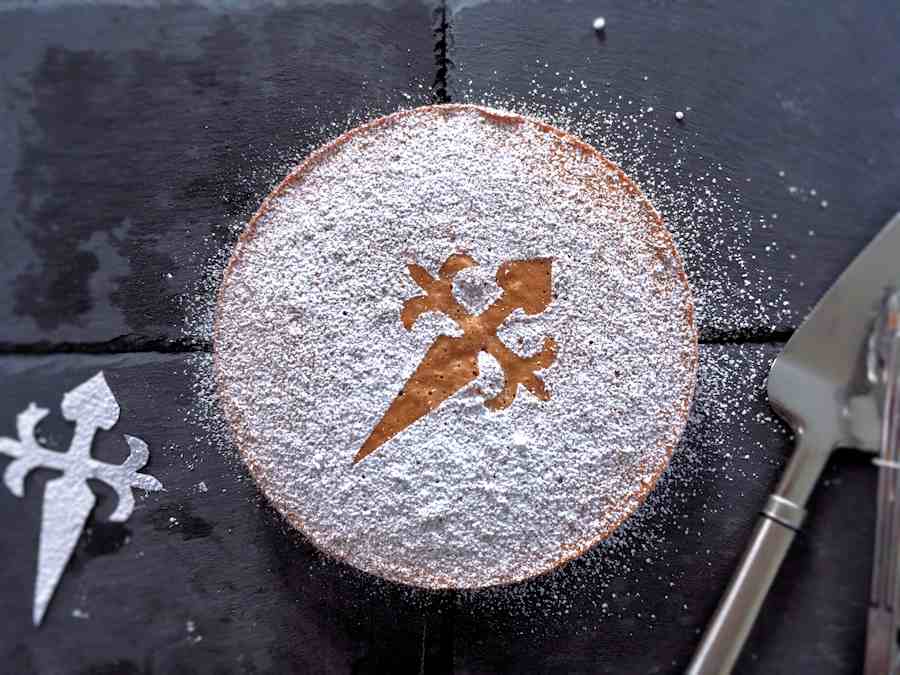
Three basic ingredients and no electric appliances required: that’s St James’ cake, or tarta de Santiago. It’s a Galician specialty going back to Middle Ages; it may have had its origin in a Passover cake brought to Galicia by Jews fleeing Andalucía in the 12th and 13th centuries. They bake it in a multitude of pastry shops in Santiago de Compostela, the capital city of Galicia which is the destination of famous Christian pilgrimage route through Northern Spain.
Simple as James the patron saint of pilgrims, the only thing fancy on it (by no means obligatory) is the cruz de Santiago, St James' cross adornment stencilled with icing sugar atop the cake. The flavourings are usually lemon and/or cinnamon but I understand the addition of sweet wine, brandy or grape pomace would not be a cardinal sin. And it’s gluten free, as incidentally as scrambled eggs are such.
I am normally not too seduced by the ‘three ingredients’ recipes. As I often said before, I don’t understand what the merit of those dishes might be: expense? Caviar and blinis ain’t cheap. Simplicity and ease? Try making mayo at home – it’s just egg and oil. Little to remember? Do we have to memorise a recipe prior to following it? But the tarta de Santiago has the simple beauty of, say, a good meringue – a mix and match made in heaven, with St James supervising.
My recipe is the result of trawling through the Internet of pilgrims and Spaniards. The latter I decided knew better what they were talking about so credits include Basco of Fine Foods – muchas gracias!